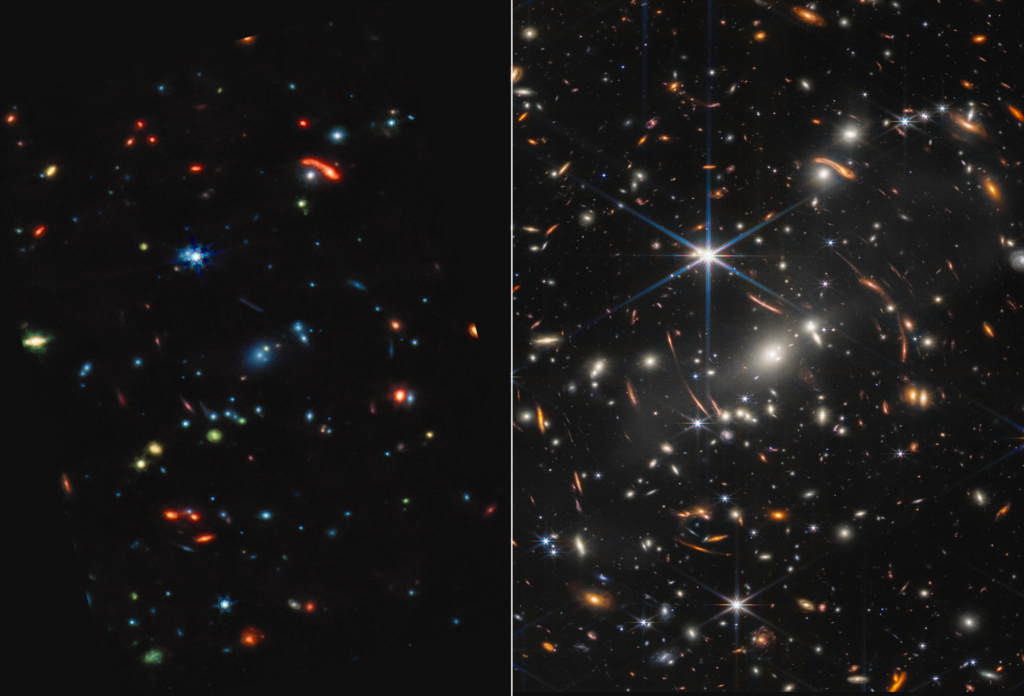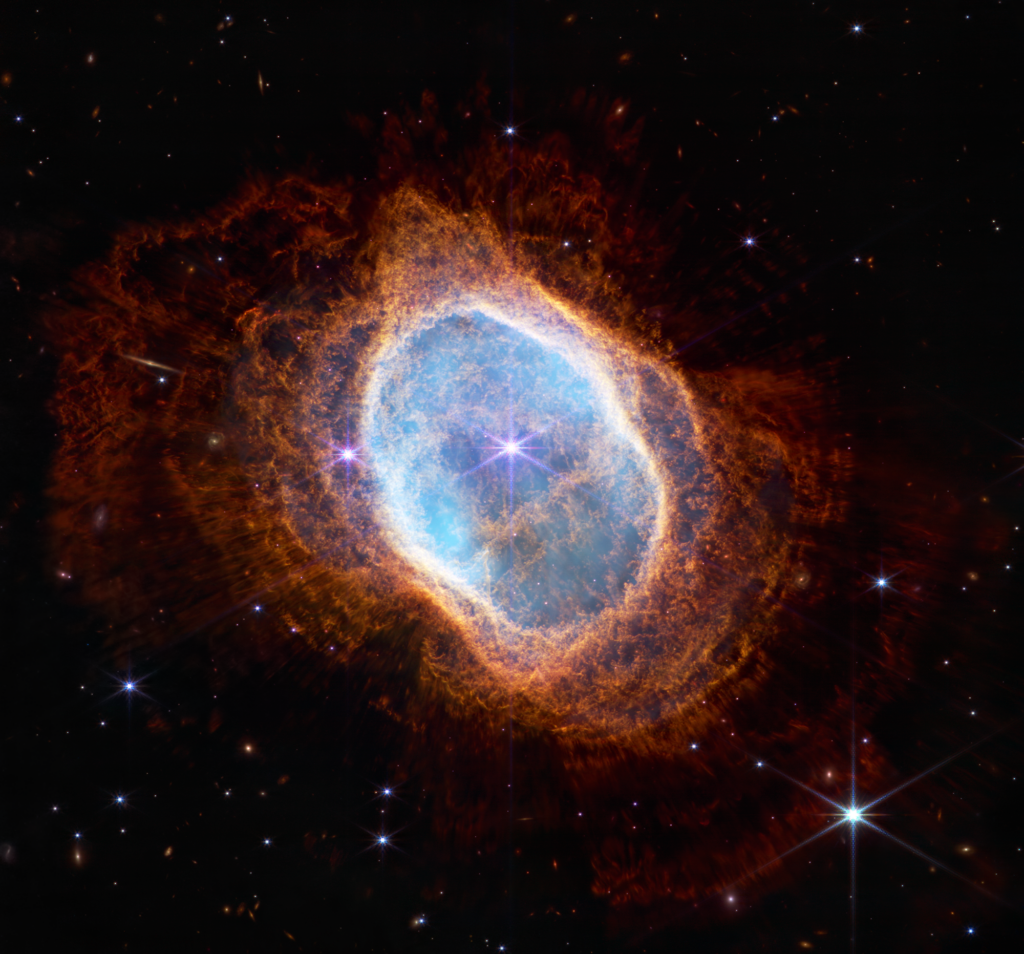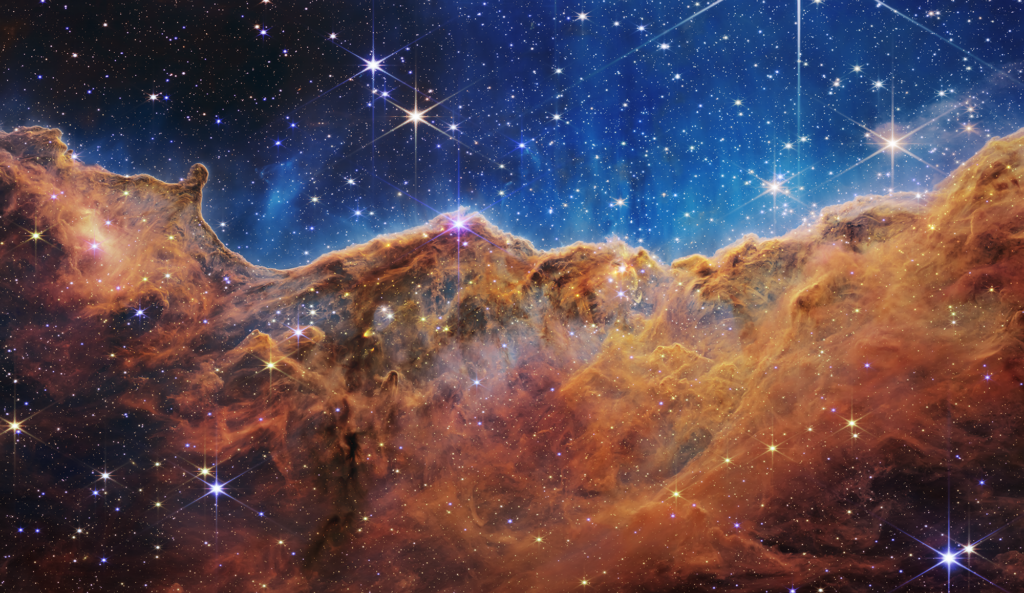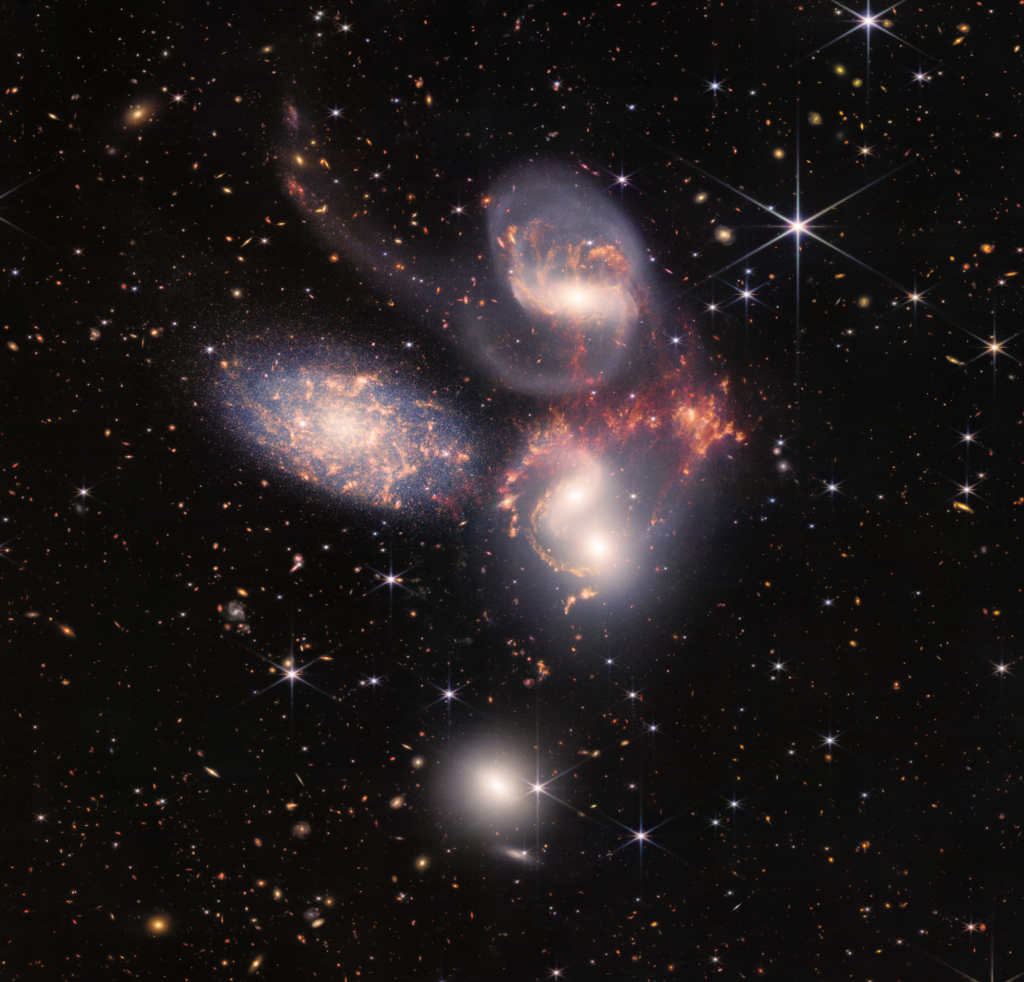NASA has published the first series of photographs taken by the James Webb Space Telescope (JWST). They demonstrate distant galaxies, dying luminaries, stellar maternity hospitals and other wonders of the Universe.
Galaxy Cluster SMACS 0723
The first part of the JWST images is dedicated to the galactic cluster SMACS 0723. We see it as it was 4.6 billion years ago — in the era when our planet was just formed. Earlier, NASA published an image of SMACS 0723 in the near infrared range, obtained using the NIRCam camera. Today it was supplemented with a photo in the mid-infrared range taken by the MIRI camera. To date, this is the most in-depth look into the Universe in the infrared range.

Comparing the two images, you can pay attention to how the colors of the galaxies have changed with increasing wavelength. In addition, the characteristic diffraction rays (an optical effect that occurs due to the design features of telescopes) around the foreground stars that are part of our Milky Way disappeared from the MIRI photo.
Spectrum of the exoplanet WASP-96 b
The next object of the survey was WASP-96 b, a hot gas giant located at a distance of 1,120 light-years from Earth. The NIRISS spectrograph allowed JWST to obtain the spectrum of its atmosphere, which is much more sensitive than the results of previous observations.

Although scientists have yet to analyze in detail the results of observations, previously JWST was able to detect water vapor, traces of cloud cover, as well as determine the temperature of the atmosphere of the gas giant. It is 725 °C.
Southern Ring Nebula
JWST photographed the planetary nebula NGC 3132, also known as the Southern Ring Nebula. It is located at a distance of 2500 light-years from Earth. The nebula formed when the dying red giant shed the outer layers of its atmosphere.

NASA has published two portraits of NGC 3132 at once, obtained with the help of NIRCam and MIRI. They demonstrate a number of structural details of the nebula that previously escaped the attention of astronomers.
Carina Nebula
Another nebula photographed by JWST was NGC 3372 (Carina Nebula), located at a distance of 7,600 light-years from Earth. Unlike NGC 3132, this is not a “funeral shroud” around a dying luminary, but a stellar maternity hospital. Right now, new luminaries and exoplanets are forming in the depths of the Carina Nebula. Using the NIRCam camera, JWST photographed a fragment of the nebula extending about 7 light-years.

The picture, striking the imagination, shows something resembling a mountain landscape. We see bizarre gas-dust structures formed in the nebula under the influence of powerful ultraviolet radiation from newborn stars.
Stephan’s Quintet
JWST also paid attention to another iconic object of deep space — Stephan’s Quintet. These are five galaxies located in the direction of the constellation Pegasus. Four of them are members of a single cluster and physically interact with each other. The fifth galaxy is located much closer to the Milky Way and has nothing to do with the rest.

Thanks to the combination of NIRCam and MIRI capabilities, JWST managed to obtain the most detailed portrait of Stephan’s Quintet in history. It demonstrates previously unknown details, including regions of active star formation consisting of torn matter, tails and shock waves caused by the gravitational interaction of galaxies.
You can also take our test to determine how much you know about JWST.
Follow us on Twitter to get the most interesting space news in time
https://twitter.com/ust_magazine

